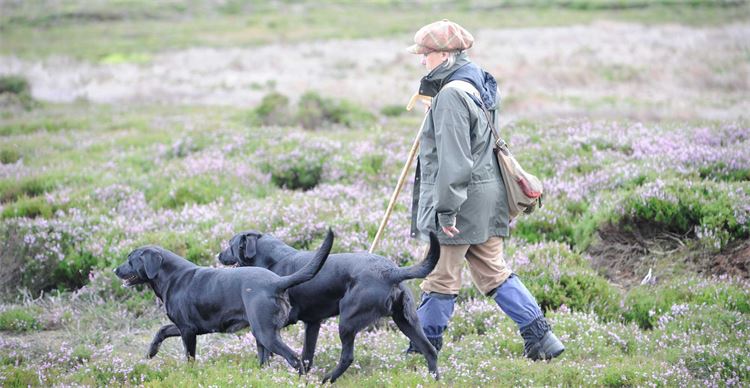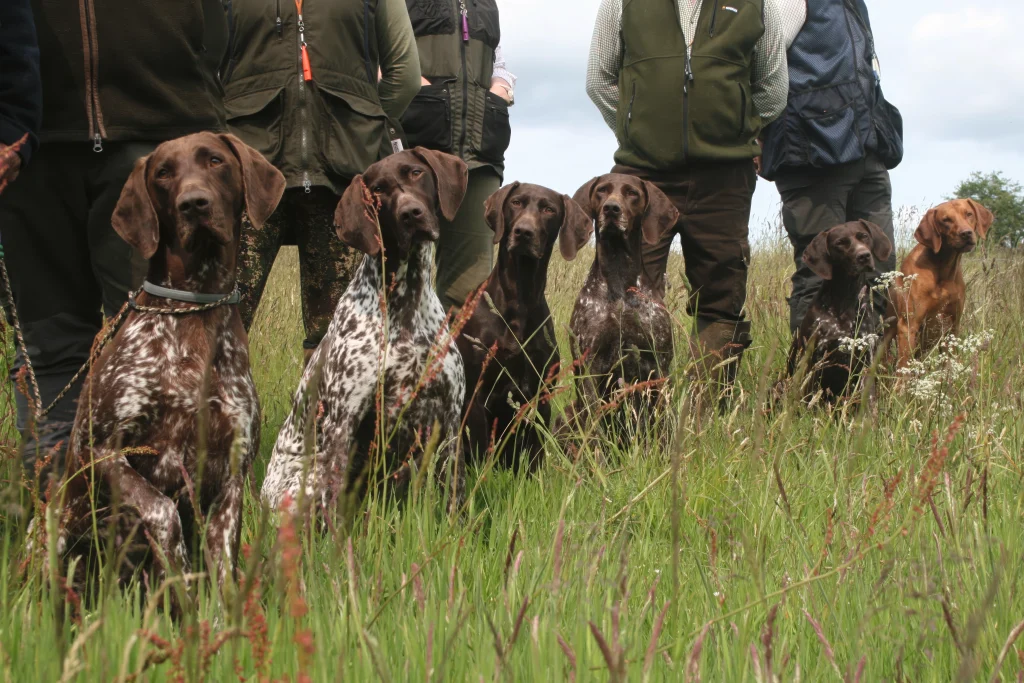Training a young labrador retriever – part 1
Gundog expert Jayne Coley summarises the early training routine that she followed with her own young labrador, Trade.

Puppies can vary so much – some are shy and lacking in confidence, whereas others are boisterous, cheeky and full-on. You have to adapt your training to suit the type of puppy you have. The steps below summarise the training routine that I have followed with my young dog, Trade, who has an easy-going temperament.
I began to train him properly in the New Year when he was 9 – 10 months old, though I usually wait until the shooting season is over when I have time to do a little each day on a regular basis.
Step 1: Foundations
By the age of 9 – 10 months, Trade had been toilet trained, knew his name and came back when I called him. He had been taught to walk to heel nicely at my side on a slack lead, sit when he was told, and had been taught manners and knew what ‘no’ and ‘good boy’ mean. He had been well socialised and behaved in company on a lead, was used to going out in my vehicle and had learned to swim. Trade has never been chastised for carrying something he should not, e.g. an expensive shoe or carrion, as this could put him off retrieving. Instead, I call him to me and calmly take the item off him – maybe having to gently prise his mouth open whilst saying “dead”. I then place the item out of reach.
Crucially, by this age we had built up a good bond before formal training began.
Step 2: Heelwork
It was so wet and muddy at home so I started training on the patio and in our yard where the pup is restricted to a certain area and there are no distractions. We began with heelwork on the lead. To keep the exercise interesting, I walked in straight lines, did figures of eight, included the occasional tight turn and altered my pace. This all helped to keep Trade focused on what we were doing. Every so often I stopped and at the same time said “sit”, raising my right hand. If he didn’t sit immediately, I repeated the command whilst pushing his bottom down with my left hand. Once confident with this routine, I put a lightweight collar on him and progressed to walking to heel off the lead, using my hands to encourage him to keep his head up and concentrate on me, when necessary.
Step 3: Sit and stay
Having told Trade to sit, I then walked away (backwards, so I could keep an eye on him) with my right hand raised, ready to say “no” should he move. If he did move, I calmly walked up to him and, holding his collar, took him back to the exact spot he moved from in a quiet but positive manner. I slowly built up the distance until I could walk around him in a huge circle. Once he did this perfectly, I introduced the recall.
Instead of always walking back to him, I would call him back to me, encouraging him to come straight to my hands which were cupped gently in front of my hips. Once I was happy with this, I began to mix up heelwork with sit and stay, and recall.
Step 4: More steadiness
Leaving him sitting, I walked back several paces and, with one hand up, reinforced the ‘sit’ command before throwing a dummy behind me. When he didn’t move, I quietly picked the dummy up myself. Gradually – over several days – I built on this until I could throw a couple of dummies, one at a time, over and around him and he remained steady. If he decided to go and pick a dummy, I said “no” in a positive tone and took him back to where he moved from and repeated the exercise, always focusing on success before progressing to the next stage.
Step 5: Dummy training
With my puppy sitting, I slipped a lead on him and, using a puppy dummy (without a toggle), taught him the ‘hold’ command. It is always important to lift the pup’s top lip out of the way when you put a dummy in his mouth. Trade was reluctant to do this at first, but with patience and perseverance over several days, he accepted it. When I took the dummy from him, I used the ‘dead’ command. Slowly, I built on this until I could walk away backwards (the length of the lead) and call him to me, concentrating on perfecting a good delivery, using my hands to encourage him to bring the dummy right to me with his head held nice and high.
Step 6: Retrieving
Next, we worked on being sent for a retrieve.
Holding both ends of a lead, I looped it over Trade’s head, said “sit” and threw a dummy forward. I then bent down and pointed my right hand towards the dummy whilst looking at the top of his head to make sure he was looking past my hand at it, before saying his name positively and at the same time letting go of one end of the lead so that he instinctively ran forward and picked the dummy.
Initially, I sat back on my heels, which encouraged him to run straight back to me. Then, without rushing or making a fuss, I held the dummy, said “dead”, and took it from him. Slowly we built on this until the lead was no longer needed.
Sometimes I would send him for the dummy, sometimes I’d pick it up myself, or I’d walk him to heel in the opposite direction before sending him. On other occasions, I would stand well back from Trade and throw a dummy over his head, call him to me and then send him for the dummy from my position.
I like to vary things as this keeps him interested and wondering what I am going to do next.
Step 7: Get back
I introduced the ‘get back’ command. With Trade sitting several paces in front of me, facing towards me, I threw a dummy over his head and, with my hand held high, said “go back”, pushing my hand up. He was at first a little unsure, so I repeated it in a lighter tone, to which he responded. In return, I praised him quietly.
Always remember, training a dog is like building a house – it is imperative that the foundations are put down properly, otherwise, sooner or later, cracks will appear.
Important things to bear in mind:
• Your voice is your most valuable tool. Keep it light and encouraging when you praise, and low and gruff when you scold, so your puppy knows the difference.
• Dogs have very acute hearing, so there is no need to shout.
• Keep your training sessions short (5 – 10 minutes).
• Never train if you are in a bad mood.
• Don’t rush things! Especially if you have a boisterous puppy. Keep everything calm and relaxed, and do things in your time.
• Always finish a training session on a positive note, dwelling on success before you move on.
Related Articles
Get the latest news delivered direct to your door
Subscribe to Gundog Journal
Unlock the full potential of your working dog with a subscription to Gundog Journal, the UK’s only dedicated magazine for gundog enthusiasts. Published bi-monthly, this authoritative resource delivers expert training advice, in-depth interviews with top trainers and veterinary guidance to help you nurture a stronger bond with your dog.
With stunning photography and thought-provoking content, Gundog Journal is your essential guide to understanding, training and celebrating your working dog.
Save 10% on shop price when you subscribe, with a choice of packages that work for you. Choose from Print & Digital or Digital only with each journal delivered directly to your door or via the app every other month, plus access to past issues with the digital back issue library.










